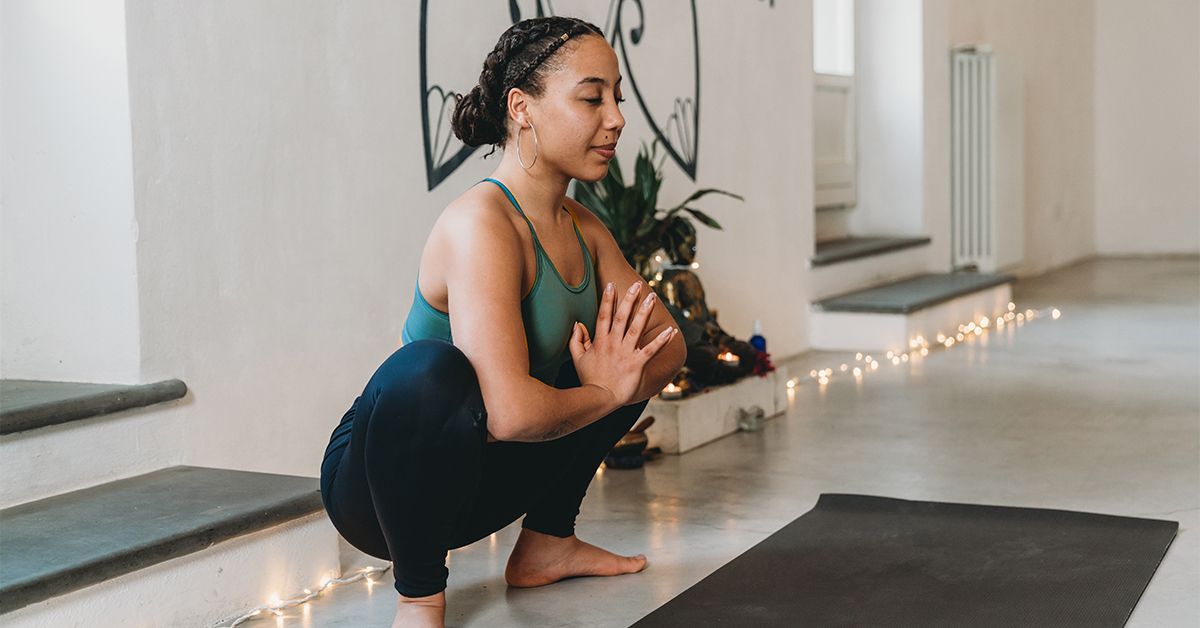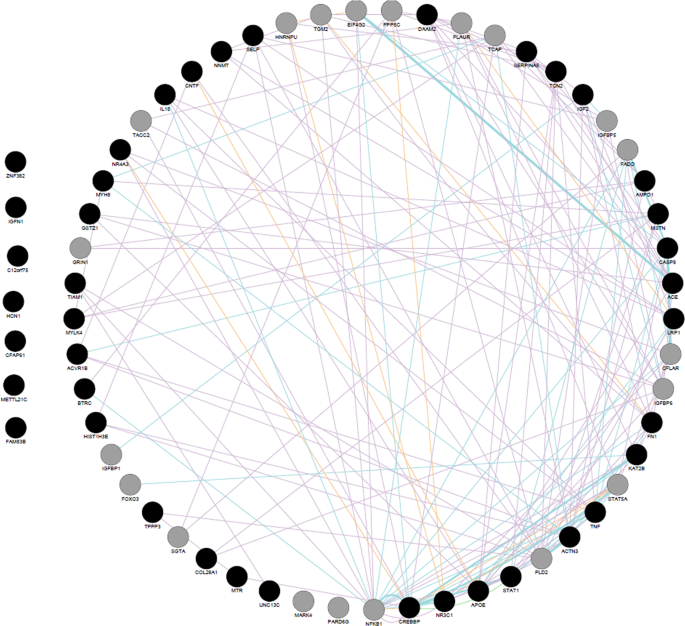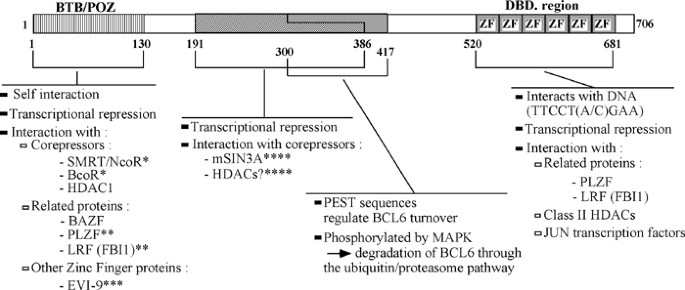
- Select a language for the TTS:
- UK English Female
- UK English Male
- US English Female
- US English Male
- Australian Female
- Australian Male
- Language selected: (auto detect) - EN
Play all audios:
Yoga for endometriosis may help relieve pelvic pain and stress, reduce the need for pain relievers, and increase your quality of life. Endometriosis is a chronic gynecological condition that
affects around 190 million people with a uterus worldwide. It occurs when tissue lining the uterus grows in other body parts, such as the ovaries, bladder, and bowel, or in the
recto-vaginal septum, fallopian tubes, and tissues that line your pelvis. One of the most common symptoms of endometriosis is pelvic and lower abdominal pain. Some research suggests that
yoga may help relieve pain, tension, and stress associated with endometriosis and improve your quality of life. Keep reading to learn more about how yoga may help you manage symptoms of
endometriosis, the best poses to try, and tips for your practice. You’ll notice the language used to share stats and other data points is pretty binary, fluctuating between the use of “male”
and “female” or “men” and “women.” While we typically avoid language like this, specificity is key when reporting on research participants and clinical findings. Impact of yoga on
endometriosis and pelvic pain Living with endometriosis can affect your physical, mental, and emotional well-being. Yoga helps manage endometriosis in several ways, according to Kasia
Gondek, a physical therapist and certified strength and conditioning specialist who specializes in women’s health and pelvic floor rehabilitation. “A yoga and mindfulness practice can
improve breathing patterns, improve posture, and decrease pain from everyday activities,” she said. “It also helps to decrease and manage symptom flare-ups.” Some research also suggests that
yoga for endometriosis may help decrease the need for pain relievers, manage stress, and increase self-confidence. Types of yoga for endometriosis Gondek recommends yoga styles that
emphasize mindfulness, slow and controlled movement, and longer holding times. This includes gentle styles of yoga like Hatha, Yin, and restorative poses. To alleviate endometriosis pain and
discomfort, Gondek advises focusing on restorative poses to release tension and promote relaxation. “Restorative positions encourage softening of the abdominals, low back muscles, inner
thighs, pelvic floor muscles, and chest wall,” she said. “These are the most common areas of the body to become tight and restricted.” Yoga Nidra is another relaxation practice that may help
alleviate anxiety, depression, and stress, as well as manage chronic pain, release tension, and improve sleep patterns. Yoga can be done at home on your own by following online videos or in
person at a local yoga studio. 8 yoga poses for endometriosis Here are some yoga poses to help alleviate pain and stress if you have endometriosis. 1. RESTORATIVE GODDESS POSE “Restorative
Goddess Pose allows for deep relaxation and opens the chest wall, hips, and inner thighs,” Gondek said. “It also calms the dorsal vagus nerve, which is in charge of our fight-or-flight
response.” To do this pose: * Place a bolster under your thighs, just below your sitting bones. Bring your feet together and let the knees fall to the side. * Use yoga blocks and cushions to
create an incline support. * Lie down with your spine and head supported by the cushions. * Relax your arms out to the sides with your palms facing up. * Focus on breathing deeply. * Hold
this pose for 3 to 10 minutes. 2. SUPINE SPINAL TWIST (SUPTA MATSYENDRASANA) “Supine Spinal Twist is a great way to release lumbosacral and abdominal myofascial restrictions that are common
with endometriosis,” Gondek said. “It also opens the chest and brings awareness to the breath through focused activation of the diaphragm and lateral rib cage expansion. It can even help
with endometriosis-related digestive issues, such as constipation or bloating.” To do this pose: * Lie on your back, with your left leg straight and right knee bent with the right foot flat
on the floor. * Extend your arms straight out to the sides with palms down against the floor. * As you inhale, breathe into your belly and lower ribs. * As you exhale, twist to the left by
lowering your right knee. For a deeper stretch, place your left hand over the right knee. * Take 5 deep breaths. * Pay attention to the stretch and lengthening sensations on the sides of
your ribs. * Return your knees to the starting position. * Repeat on the right side. To support your low back and sacrum, place a pillow or yoga block between your knees. Place a pillow
under your knees if they don’t reach the floor. 3. HAPPY BABY POSE (ANANDA BALASANA) Happy Baby is a gentle hip opener that improves flexibility, reduces anxiety, and encourages peace of
mind. “This pose is great for releasing pelvic floor muscles, low back muscles, inner thighs, and hamstrings,” Gondek said. “Endometriosis can cause these muscles to become tender and
restricted due to pain-related movement or posture compensations.” If your hands don’t reach your feet, place them on your thighs or calves, or use a strap over the arches of your feet. *
Lie on your back. * Bend your knees toward the outside of your chest. * Face the soles of your feet toward the ceiling. * Place your hands on the outsides of your feet. * To create
resistance, use your hands to press your feet down. * At the same time, press your feet up into your hands. * Focus on releasing tension in your hips and pelvic floor. * Hold this position
for up to 1 minute. 4. CHILD’S POSE (BALASANA) This gentle forward fold may help promote relaxation and inner awareness. It gently stretches your spine, hips, and glutes, helping to
alleviate tension, cramping, and stress. To do this pose: * Start on your hands and knees. * Lower your hips and place them on your heels. * Place your knees together or slightly wider than
your hips. * Hinge at your hips to fold forward. * Extend your arms in front of or alongside your body. * Hold this position for up to 5 minutes. For more support, place a cushion under your
forehead, torso, or legs. 5. LEGS-UP-THE-WALL POSE (VIPARITA KARANI) This pose has a calming effect and may help improve circulation, soften pelvic muscles, and alleviate cramping. To do
this pose: * Sit on the floor with your right side against a wall. * Lift your legs and place them against the wall as you lie on your back. * Place your hips next to the wall or slightly
away. * Place your arms alongside your body or place your hands on your belly. * Hold this position for up to 15 minutes. 6. RECLINED HERO POSE (SUPTA VIRASANA) This pose may gently stretch
your abdomen and pelvis and help relieve pain, bloating, and discomfort. To reduce the intensity, do this pose one leg at a time. To support your head and neck, create an incline support
using blocks and cushions. * Start in a kneeling position with the insides of your knees together. * Move your feet wider than your hips, with the tops of your feet touching the floor and
your big toes turned in toward the center. * Rest your buttocks on the floor between your feet. * Lean back, using your forearms and elbows for support. * Gently ease your way onto your
back. * Place your arms next to your body at a slight angle. * Hold this position for up to 1 minute. * Return to a seated position. 7. RECLINED BOUND ANGLE POSE (SUPTA BADDHA KONASANA) This
relaxing pose may help calm your nervous system and relieve stress. It could alleviate tightness in your hips, pelvis, and inner thighs. It may also gently stretch your stomach, which can
reduce pelvic discomfort. * While seated, press the soles of your feet together with your knees out to the sides. * Lie down on your back. * Place your arms alongside your body or place your
hands on your belly. * Hold this position for up to 5 minutes. For more support, consider using blocks or cushions under your knees or your chest. 8. GARLAND POSE (MALASANA) This squat
strengthens your pelvic muscles and helps relieve pain, cramping, and digestive concerns. It may also gently stretch your lower back, hips, and thighs, increasing flexibility and
circulation. To do this pose: * Stand with your feet slightly wider than your hips. * Press the palms of your hands together. * Turn your toes out to the sides slightly. * Bend your knees
and slowly lower your hips into a low squat. * Press your heels into the floor. * Lift your pelvic floor and elongate your spine. * To deepen the pose, press your elbows into your thighs. *
Hold this pose for up to 1 minute. For extra support, consider placing a block or cushion under your heels or hips, or do this pose with your back against a wall. Risks of doing yoga with
endometriosis It’s generally safe to practice yoga with endometriosis. However, vigorous styles of yoga, such as Ashtanga, Vinyasa, or hot yoga, can make symptoms worse. Listen to your body
and avoid poses that cause or worsen symptoms. If you’ve recently had abdominal surgery, Gondek advises talking with your surgeon before starting a yoga practice. “To protect the healing
tissues, avoid positions that place pressure on your abdomen or surgical site,” she said. “This includes lying on your stomach in Sphinx Pose, bringing your thighs into contact with your
abdomen during Child’s Pose, or compressing your abdomen in Happy Baby Pose.” Gondek advises avoiding twisting poses until your surgeon clears you. “Once you are healed and cleared for
activity, these positions are very beneficial in improving scar tissue mobility, strength, flexibility, and posture,” she said. Tips for practicing yoga with endometriosis To make the most
of your yoga practice, pay attention to how you’re feeling each day. Notice your physical, mental, and emotional response to each pose. Use your breath to focus your awareness on any areas
of discomfort or sensation. Avoid poses that put too much pressure on your abdomen, cause pain, or make symptoms worse. Gondek recommends using props such as bolsters, blankets, and yoga
blocks to modify poses and provide support. “This helps to decrease muscle guarding, which can occur when we are experiencing pain,” she said. “It gently supports the joints and muscles so
that we can fully relax and release into a pose.” The bottom line If you have endometriosis, you can create a plan to manage your symptoms and prevent complications. Yoga is an effective
tool for managing and reducing the severity of endometriosis symptoms. It offers a range of physical, mental, and emotional benefits. Speak with a doctor before starting a new yoga program,
especially if you have severe symptoms. If possible, practice under the guidance of a yoga instructor.









